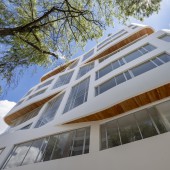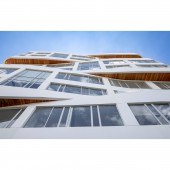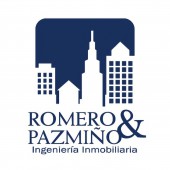MareNostrum Residential Building by Aaron Leppanen and Gabriela Anker |
Home > Winners > #104748 |
 |
|
||||
| DESIGN DETAILS | |||||
| DESIGN NAME: MareNostrum PRIMARY FUNCTION: Residential Building INSPIRATION: The site of the project was named Mare Nostrum after an existing restaurant, whose latin meaning is our sea. The ancient Romans baptized what is now the Mediterranean Sea with this name. Inspired in this context, the movement that the oars of the fleets of the Roman Empire used centuries ago to protect their territories is reinterpreted on its facade. Reinforcing this concept an experience of movement is created for the users inside and outside the spaces. UNIQUE PROPERTIES / PROJECT DESCRIPTION: Throughout the 8 story residential building, the movement of the facade generates large balconies, which extends the interior space to the exterior. The form has passive sustainability strategies, such as ventilation and natural light. The volume of the building allows different types of apartments, suites, 2 bedrooms, 3 bedrooms and lofts. In addition, social spaces are created inside the building, such as a lounge and green areas on the terrace, to take advantage of the urban context. OPERATION / FLOW / INTERACTION: The characteristic cutout corners, spanning over two levels, give the building a softer attitude. They also create spaces and opportunities for neighbors to interact with each other, between the balconies of differing depth. The cutout corners also provide shade protecting from the hot Andean sun. PROJECT DURATION AND LOCATION: The project started in 2016 and was completed in 2019 in Quito, Ecuador. FITS BEST INTO CATEGORY: Architecture, Building and Structure Design |
PRODUCTION / REALIZATION TECHNOLOGY: The facade and the lobby have the same language in their design. However the facade was constructed with conventional masonry blocks and mortar. The lobby in contrast was built with a combination of digital fabrication and artisan work. The unique lobby forms were made with a cnc cut mdf structure and colorado wood panels cut by hand. The use of complementary digital and artisan construction techniques was key to attain such unconventional forms in a setting like Ecuador. SPECIFICATIONS / TECHNICAL PROPERTIES: The building has 8 stories and 3 underground levels in a 1250 square meters lot. The total construction area is 8,800 square meters. The building has a reinforced concrete structure with steel deck floor plates. TAGS: Sea , Waves , Urban , Facade , Residential RESEARCH ABSTRACT: Our office research primarily focuses on form finding through organic efficiencies. Specifically varied repetition is of interest, looking for models of difference through a similar design process. The objective behind this research is to identify potential insights and techniques that can be implemented in our iterative design process. Methods include digital sketching in rhino and grasshopper and physical printed models. In the iterative process, experimentation is the most important aspect in the search for potential architectural solutions. These experiments are tested against the various project parameters, which could include; zoning, context, client preferences, marketing strategies, constructability and other conceptual criteria. The result of this process is constructible yet experimental design that has movement, emotion, repetition and a physical presence in our community. CHALLENGE: The historical connection that the site of the project had with the sea inspired the form. The local construction technology however gave limitations on how this form would be attained. After evaluating different materials , the conventional masonry blocks and cement materials were used in a sculpted work with the local artisans to build the wave inspired facade. The combination of these curved walls and wooden accents below the cantilevered floor plate extensions created the desired volume. ADDED DATE: 2020-03-30 21:03:58 TEAM MEMBERS (6) : Aaron Leppanen, Gabriela Anker, Sofía Chávez, Caroline Dieden, José Silva and Gabriela Valdéz Mena IMAGE CREDITS: BICUBIK |
||||
| Visit the following page to learn more: https://www.leppanenanker.com/b-projects |
|||||
| AWARD DETAILS | |
 |
Marenostrum Residential Building by Aaron Leppanen and Gabriela Anker is Winner in Architecture, Building and Structure Design Category, 2019 - 2020.· Read the interview with designer Aaron Leppanen and Gabriela Anker for design MareNostrum here.· Press Members: Login or Register to request an exclusive interview with Aaron Leppanen and Gabriela Anker. · Click here to register inorder to view the profile and other works by Aaron Leppanen and Gabriela Anker. |
| SOCIAL |
| + Add to Likes / Favorites | Send to My Email | Comment | Testimonials | View Press-Release | Press Kit |
Did you like Aaron Leppanen and Gabriela Anker's Architecture Design?
You will most likely enjoy other award winning architecture design as well.
Click here to view more Award Winning Architecture Design.








